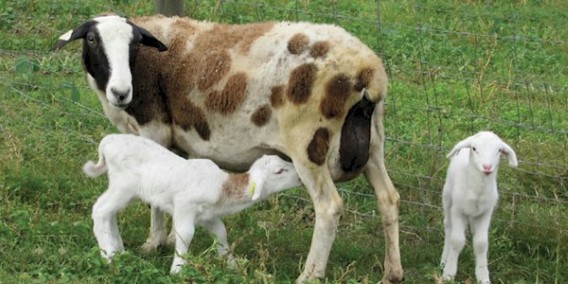St. Augustine sheep are a cross between Dorper and St. Croix sheep. They were developed in
Florida, USA, by Ron Taber in 2000.
St. Croix, sheep have superior mothering abilities, parasite
resistance, and hardiness; while Dorpers are larger and have a heavily-muscled
frame. The result is a meat sheep cross that does well in hot, humid condition.
St. Augustine sheep are medium sized with a medium sized
frame. They are well adapted to hot, humid climates and have good parasite
resistance. They are easy to handle, with good flocking instinct. As excellent
foragers, mature ewes and rams do well on coastal / bahai grass pasture. Ewes are
deep bodied, able to produce multiple births with ease. Rams are fertile during
hot summer months when other breeds are sterile. Dressed carcass percentage on
St. Augustine market lambs is 50%, and meat is mild in flavor.
Their head shape and appearance vary. A roman nose in rams
and ewes is common and acceptable. Ears should be medium to large in size to
promote cooling. Most will have a wool/hair coat that sheds, however, some will
have a permanent wool/hair coat. They may be any color, color combination, or
color pattern.
They exhibit three coat types: a hair coat with no permanent
wool fibers present; short wool/hair combination staple that sheds; wool/hair
combination that does not shed. While polled sheep are preferred many are
horned.
With good care, ewes lambing annually will produce a 190%
lamb crop. In an accelerated lambing program (lambing 3 times in 2 years),
mature ewes with good care will produce a 175% lamb crop with each lambing.
Lamb birth weight is 7-8 lb. Ewe lambs of good frame may be bred at 7 months to
lamb at 1 year of age, and will produce a 150% lamb crop. Yearling ewes will
have smaller lambs that average a 5-6 lb. birth weight, but if bred young are
more productive as adults.
St. Augustine lambs are vigorous with good nursing
instincts. Lambs grow well and produce meat with a mild flavor.

